Analyzing the Suitability of Seedling Tray Seeders for Different Crop Seeds
2024-10-01 20:49:56
As modern agriculture rapidly advances, seedling tray seeders play an increasingly crucial role in enhancing sowing efficiency, saving labor, and improving seed germination rates. The characteristics of seeds vary widely among different crops in terms of shape, size, and sowing depth requirements. Selecting the right seedling tray seeder to meet diverse planting needs is a key concern for farmers. This article provides a detailed analysis of the suitability of seedling tray seeders for different crop seeds, helping you choose the most appropriate sowing equipment.
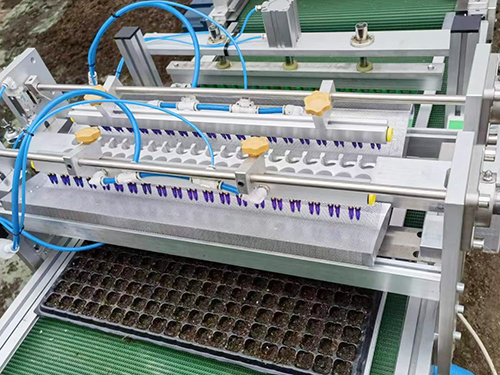
1. Overview of Basic Functions of Seedling Tray Seeders
Seedling tray seeders are mechanical devices designed to accurately sow seeds into seedling trays, automating the laborious manual sowing process. Their core functions include:
1.1. Precise Sowing
Seedling tray seeders can place seeds accurately into each cavity of the tray based on the size and shape of the seeds, ensuring uniform sowing.
1.2. Adjustable Sowing Depth
Different seeds require specific sowing depths for optimal germination. Seedling tray seeders can flexibly adjust the sowing depth to meet the needs of various crops.
1.3. Speed and Efficiency
Compared to traditional manual sowing, seedling tray seeders significantly reduce sowing time, especially for large-scale planting, greatly improving efficiency.
1.4. Versatility
Modern seedling tray seeders employ various technologies to adapt to different types and sizes of crop seeds, providing a broad range of applications.
2. Analysis of Seed Characteristics for Different Crops
Understanding seed characteristics is crucial when selecting a suitable seedling tray seeder. Seeds vary in size, shape, weight, and germination requirements, influencing the design and functionality of the seeder.
2.1. Vegetable Seeds
Common Crops: Tomatoes, peppers, eggplants, cucumbers, cabbages, etc.
Seed Characteristics: These seeds are typically small and spherical or oval-shaped, with specific depth requirements for sowing.
Suitable Seeder: Most seedling tray seeders can handle these seeds, provided they have precise depth control to ensure proper sowing depth.
2.2. Melon and Fruit Seeds
Common Crops: Watermelons, cantaloupes, pumpkins, honeydews, etc.
Seed Characteristics: These seeds are larger, flat, and heavier, requiring deeper cavities for sowing.
Suitable Seeder: Requires a seeder with larger cavity sizes and adjustable depth settings to accommodate larger seeds and ensure proper sowing depth.
2.3. Legume Seeds
Common Crops: Soybeans, peas, broad beans, etc.
Seed Characteristics: Legume seeds are generally larger, oval, or spherical, requiring even distribution without excessive depth.
Suitable Seeder: Needs a seeder with adjustable depth control and a delivery system that prevents seed clogging, ensuring uniform sowing.
2.4. Flower Seeds
Common Crops: Chrysanthemums, lilies, roses, carnations, etc.
Seed Characteristics: Flower seeds vary widely in size and shape, with some being small and light and others larger.
Suitable Seeder: Should have multiple depth adjustment options and seed sorting features to handle both small and large seeds accurately.
2.5. Turf Seeds
Common Crops: Kentucky bluegrass, ryegrass, fescue, etc.
Seed Characteristics: Turf seeds are small and lightweight, requiring even surface distribution and shallow sowing.
Suitable Seeder: Requires high-precision broadcasting capabilities to ensure even seed distribution and prevent concentration in one area.
2.6. Medicinal Plant Seeds
Common Crops: Ginseng, astragalus, angelica, ban lan gen, etc.
Seed Characteristics: Medicinal plant seeds vary in size, with some being large and hard and others small and light, requiring specific depth and spacing.
Suitable Seeder: Should be multifunctional, capable of handling different seed sizes and weights with precise depth and spacing adjustments.
3. Key Technologies for Versatile Seedling Tray Seeders
To cater to the diverse needs of different crop seeds, modern seedling tray seeders incorporate several key technologies:
3.1. Adjustable Aperture System
To accommodate seeds of varying sizes, seedling tray seeders should have an adjustable aperture system to handle both small and large seeds.
3.2. Precise Sowing Depth Control
Depth control is critical for seed germination. The seeder should accurately adjust sowing depth based on seed characteristics, ensuring optimal conditions for seedling development.
3.3. Intelligent Seed Distribution System
For seeds that need to be evenly distributed, such as turf seeds, the seeder should have an intelligent distribution system to ensure uniform seed placement and avoid over-density or gaps.
3.4. Multiple Operating Modes
Modern seeders often come with multiple operating modes to switch between different crop requirements, accommodating a variety of sowing needs.
3.5. Efficient Seed Handling System
For larger or harder seeds, such as those from melons and legumes, the seeder’s handling system must prevent seed jamming or damage, ensuring smooth operation.
4. How to Choose the Right Seedling Tray Seeder for Your Needs
Selecting the appropriate seedling tray seeder involves considering crop types, planting scale, and budget. Key factors to focus on include:
4.1. Crop Diversity
For diverse crop planting, opt for a multifunctional seeder that can handle various seed sizes and shapes, meeting multiple planting needs.
4.2. Degree of Automation
Depending on the scale of planting and labor costs, choose between manual, semi-automatic, or fully automatic seedling tray seeders. Large-scale operations benefit from fully automatic seeders to enhance productivity.
4.3. Machine Compatibility
Ensure the seeder is compatible with the seedling tray specifications you use and can adapt to different sowing requirements.
4.4. After-Sales Service and Maintenance
Select a seeder from a reputable brand with good after-sales support, providing necessary technical guidance and maintenance services.
5. Conclusion
Seedling tray seeders are essential tools in modern agriculture, significantly improving planting efficiency and yield through their precise and efficient sowing technologies. Understanding the characteristics of different crop seeds is crucial for selecting the right seeder. We hope this analysis helps you make an informed decision when choosing a seedling tray seeder. If you are looking for efficient sowing solutions for various crops, contact us for the best seeder products and services to enhance your agricultural productivity and achieve a bountiful harvest.
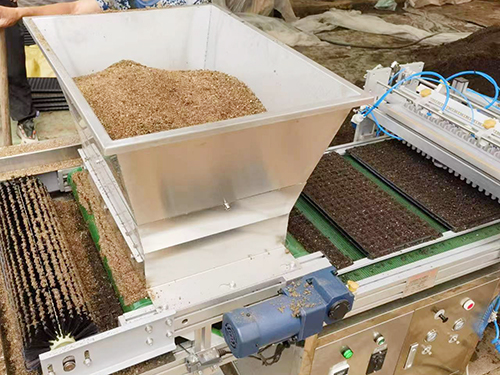
Our state-of-the-art Vegetable and Flower Seedling Seeder is designed to streamline your se...
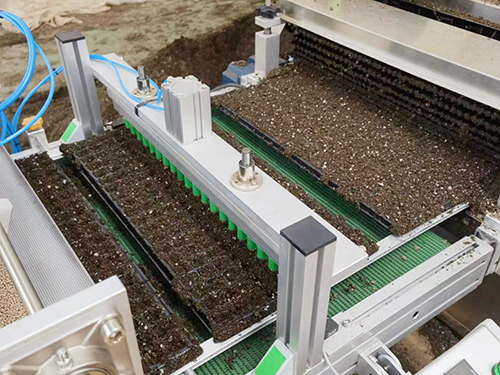
The vegetable seed seedling pressing equipment is a new seedling raising device....
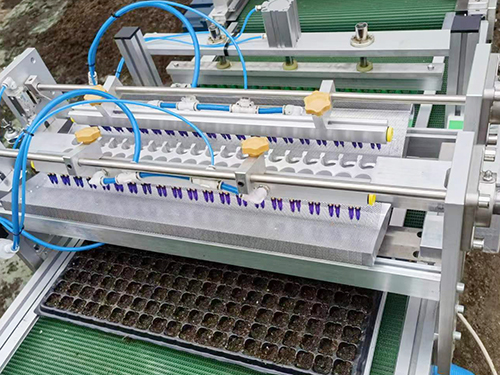
The operation process of the automatic plug tray seedling seeder is to distribute the subst...
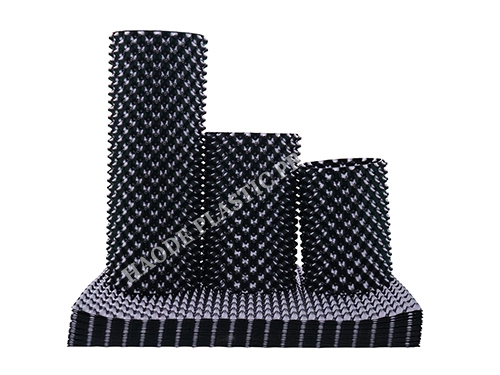
The Root Control Container for Landscaping Seedlings represents a groundbreaking advancemen...



